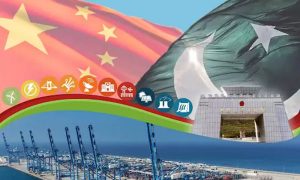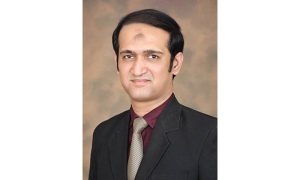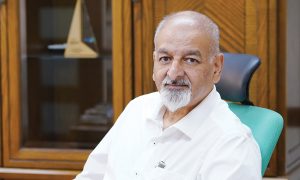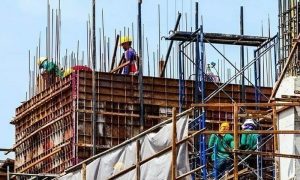Participants in a meeting on urban Karachi were informed that Karachi plus Mumbai and Dhaka were three cities of South Asia which have dense populations where 62 per cent (about 13 million) citizens lived in informal settlements on 23pc of the city`s residential land.
`Karachi is among the dense cities where urban issues are ever increasing,` said architect and planner Arif Hasan while speaking at the two day program organised by IBA Literary Society at Arts Council.
He said 36pc (about 7.5 million) Karachiites live in `planned` settlements on 77pc of city`s residential plots. Presently Karachi has over 250,000 vacant developed plots and over 68,000 apartments. Another 600,000 plots are being developed and/ or constructed by formal sector. None of these new developments is for low income people.
Arch. Hasan said 71.32pc people lived on less than 100 square yards; 24.27pc on100-120 sq yds; 3 percent on120-240 sq yds, and 1.47pc lived on above 240 square yard plots.
Karachiites, he said, invariably prefer houses to apartments and would like their settlements upgraded. This was acceptable to the state till the early part of 2000. However, governments wished to bulldoze the settlements and create medium size apartment blocks by providing land to developers. `The government`s reasoning is that in apartments you can get higher densities and that they give the city a `modern look`. Community’s view they cannot carry out any economic activity in apartments and have problems in organising and financing collective management.
He said individual options can provide higher densities than permitted (1,625 persons per hectare) by Karachi Building Bylaws and Zoning Regulations.
Regarding world class city agenda and evictions, Arch. Hasan said evictions had increased substantially. Between 1998 and 2008, 18.59 million persons were evicted; and currently, 15 million annually.
Why evictions? Because gentrification, mega projects (mainly roads), events and discrimination. All studies show that as a result of eviction and relocation, affected population became poorer in social, political and economic terms with a negative impact on their future generations. Global slum population was 863 million in 2010, against 650m in 1990.
Transport problems
Arch. Hasan spoke at length on Karachi’s transport problems, saying some 35.3pc commuters spent 41 to 60 minutes while commuting to work; 13.3pc 18 to 19 minutes and waiting time at bus stops was five to 20 minutes.
Besides, 54pc said they regularly had disputes on fares; 60pc blamed it on footrest; 60 pc claimed they had been robbed once or more during travel; 79.3pc considered CNG cylinders in the buses as safety hazards; 82pc believe a better transport system would increase their job opportunities; 86pc felt need to increase seating for women as a number of them walked long distances to save on bus fare; when they were late due to delays in catching a bus they got scolded and bore salary deductions.
`Inadequate and unreliable transport and housing locations are a major source of poverty. Despite investment in expensive mass transit projects, these cater to only 4.8pc of commuting public in Delhi, six per cent in Bangkok and 8.7pc in Karachi.
Writer, and researcher Akhtar Balouch spoke on the communities, Jews in particular, who migrated from Karachi because of decreasing space for them after Partition.
He said the newly formed nation changed names of buildings and streets named after people who participated in developing Karachi. Same happened with the monuments and streets related to prominent people from non-Muslim communities.
He said there was a roundabout named Abraham Chowk, which was renamed Ibrahim Chowk, and later Cheel Chowk, in Lyari. `Interestingly, when the roundabout was developed by authorities they placed a monumental `Shaheen` of Allama Iqbal at the centre, which was later recognised as ‘cheel’ [kite] by common citizens.
Similarly, in Ranchhore Line there was a Synagogue Street, which was `converted` to Sharif Shaheed Street.
`Feeling the space in society shrinking for them, the Jews started to migrate to other countries, especially to Israel.
He gave various references terming the community as peaceful educated and professional. He said there was a (Bani Israil Trust) Magain Shalom Synagogue, a famous building, still remembered by old residents of the area. Now, he added, the building was replaced by a shopping centre.
`The last trustee of the building was a Jew woman, Reshel Joseph, who agreed for construction of a new building with a shopping centre on its ground floor and a new Jew temple on the upper floors. However, later the upper floors were converted into residential area. We found that Reshel had been in contact with a few journalists and lawyers till 2007. Later she also left the country.








